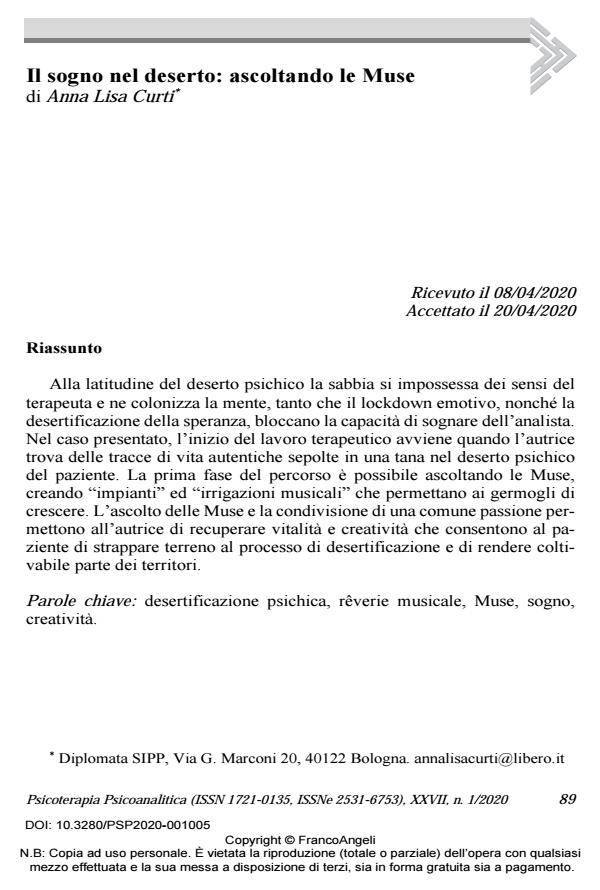The Dream in the Desert: listening to the Muses
Journal title PSICOTERAPIA PSICOANALITICA
Author/s Anna Lisa Curti
Publishing Year 2020 Issue 2020/1
Language Italian Pages 17 P. 89-105 File size 220 KB
DOI 10.3280/PSP2020-001005
DOI is like a bar code for intellectual property: to have more infomation
click here
Below, you can see the article first page
If you want to buy this article in PDF format, you can do it, following the instructions to buy download credits

FrancoAngeli is member of Publishers International Linking Association, Inc (PILA), a not-for-profit association which run the CrossRef service enabling links to and from online scholarly content.
At the latitude of the psychic desert, the sand takes possession of the therapist’s senses and colonizes her mind, so much so that the emo-tional lockdown, as well as the desertification of hope, block the ana-lyst’s ability to dream. In the presented case, the beginning of the ther-apeutic work occurs when the author finds authentic traces of life bur-ied in a den in the patient’s psychic desert. The first phase of the jour-ney is possible by listening to the Muses, creating "plants" and "musi-cal irrigations" that allow the sprouts to grow. Listening to the Muses and sharing a common passion makes it possible for the Author to recover vitality and creativity through which the patient finally tears off ground to the desertification process while making part of the psychic territories cultivable.
Keywords: Psychic desertification, musical rêverie, Muses, dream, creativity.
Anna Lisa Curti, Il sogno nel deserto: ascoltando le Muse in "PSICOTERAPIA PSICOANALITICA" 1/2020, pp 89-105, DOI: 10.3280/PSP2020-001005